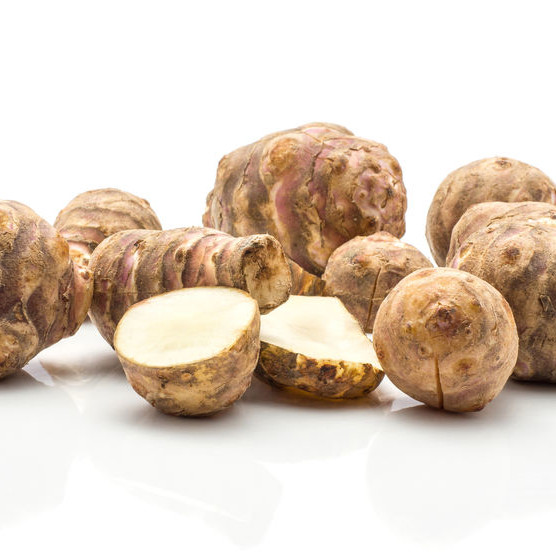
Inulin
What is Inulin?
Inulin is a water-soluble dietary fiber, approved by the FDA.1 It’s a non-starch oligosaccharide. A variety of cereal-based products, such as baked goods, breakfast cereals and energy bars are made with inulin to provide:
- Fat replacement
- Sugar substitution
- Bulking
- Soluble dietary fiber and prebiotic properties
Origin
Many plant-based materials contain inulin. Tubers and roots of chicory (Cichorium intybus), Jerusalem artichoke, dalia, and whole grains contain inulin. For commercial production, chicory is the most common source.
The chemical structure of inulin is C6nH10n+2O5n+1.
The Inulin molecule consists of 30-35 fructose units linearly arranged in β-1,2 linkage with alpha-1,2-linked glucose at non-reducing ends. Inulin occurs in various polymer chain lengths, referred to as degree of polymerization (DP).3
Function
Health benefits of this ingredient include:2,4
- Prebiotic activity
- Enhanced calcium absorption
- Protection of the human digestive system from enteric infections
- Improved digestion
- Stimulation of immune response
- Reduced blood lipids and sugar content
- Oral health benefits
Commercial production
Commercial production from dried chicory or Jerusalem artichoke roots involves few steps:2
- Washing, drying and grinding
- Water extraction at 158°F (70°C) with stirring
- Filtration and drying to fine powder
Application
Inulin can be used as a source of dietary fiber in the production of high-fiber or fibre-enriched breads. This ingredient can be used at levels ranging from 0.2 to 5.0% (based on flour weight) without having adverse effects on gluten hydration and dough handling properties. For example, extensibility and resistance of deformation.
The sponge and dough (S&D) system is highly recommended when this ingredient and whole grains are added to bread formulations. S&D systems allow for properly pre-hydrating highly water-competitive ingredients that tend to limit the functionality of gluten-forming proteins in the dough. This is critical in the production of bread with high levels of whole grains and fiber inclusions.
Inulin as a hydrocolloid and low-calorie carbohydrate
Upon hydration with water, inulin behaves like a hydrocolloid and forms gels which are more viscous than regular cornstarch or its hydrolyzed products such as dextrins, maltose and glucose. It has a lower caloric density than regular carbohydrates (about 1.5–2.0 cal/g).
When inulin is added to foods it tends to enhance moisture retention and can provide a creamy texture to foam-based goods.
FDA regulation1
The FDA confirmed the dietary fiber status of inulin in the New Nutrition Facts Labeling regulations for food and supplements which has been implemented in January 1st, 2020 and which includes physiological health benefits for human health.
References
- Food and Drug Administration, Questions and Answers on Dietary Fiber, https://www.fda.gov/food/food-labeling-nutrition/questions-and-answers-dietary-fiber, Accessed 15 March 2020.
- Alexandrina Sirbu, Camelia Arghire, “Functional Bread: Effect of Inulin-Type Products Addition on Dough Rheology and Bread Quality.” Journal of Cereal Science, Volume 75, May 2017, Pages 220–227.
- Huber, K.C., and BeMiller, J.N. “Carbohydrates.” Fennema’s Food Chemistry, 5th edition, CRC Press, Taylor & Francis Group, LLC, 2017, pp. 161–165.
- Ghosh, N., Das, A., and Sen, C.K. “Nutritional Supplements and Functional Foods: Functional Significance and Global Regulations.” Nutraceutical and Functional Food Regulations in the United States and around the World, 3rd edition, Academic Press, Elsevier Inc., 2019, pp. 13–35.

